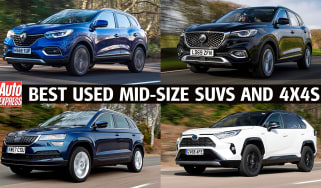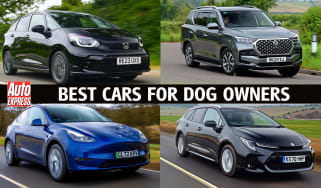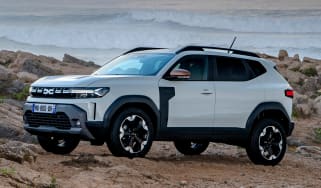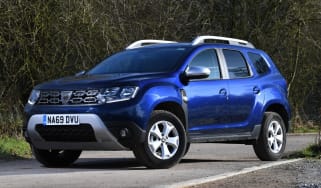Dacia Duster review: well-priced SUV with a practical interior
The Dacia Duster continues the value-driven approach of its predecessor while offering more equipment and practicality than ever before

Quick verdict
Thankfully, the latest Dacia Duster stays true to the company’s principle of offering good-value motoring. It might not be the most refined or luxurious SUV out there, but the Duster’s honesty makes it easy to enjoy. Pricing and finance offers will be crucial to the car’s success, although the myriad improvements certainly warrant a higher price tag.
|
Key specs | |
|
Fuel type |
Petrol |
|
Body style |
SUV |
|
Powertrain |
1.2-litre, 3cyl, petrol plus MHEV, front-wheel drive 1.2-litre, 3cyl, petrol plus MHEV, four-wheel drive 1.6-litre, 4cyl, petrol plus 1x e-motor, front-wheel drive |
|
Safety |
N/A |
|
Warranty |
3yrs/60,000 miles |
Dacia Duster: price, specs and rivals
Other car manufacturers must be wondering just how Dacia’s business plan works. The Romanian firm has made a name for itself as the go-to brand for value driven customers, taking a huge 8.4 per cent share in the European car market. And while the temptation may be there to make its cars more premium, and profitable, Dacia’s feet are firmly on the floor.
The latest Duster is a good example of this. According to Dacia, it should start at “well under £20,000” – or possibly closer to £18k – when it arrives in the UK later in 2024. That’d represent only a marginal increase on the outgoing car’s £17,925 price tag.
With 2.4 million Dusters sold since the original launched in 2010, this is Dacia’s most popular model worldwide. The latest one is the first all-new car to launch since the firm’s rebranding in 2022, and visually, at least, it shows.
More reviews
Car group tests
In-depth reviews
Long-term tests
Road tests
- Dacia Duster Expression 130 TCE petrol review
- New Dacia Duster Extreme SE 2022 review
- Dacia Duster petrol review
- New Dacia Duster Bi-Fuel 2020 review
Used car tests
The Dacia Duster sits on Renault Group’s CMF-B platform that underpins the Renault Clio and Renault Captur, as well as the Dacia Sandero and Dacia Jogger. The Duster is slightly wider and lower than the model it replaces, and only a little bit longer than before. It looks more like an off-roader than a crossover SUV with a stocky stance, chunky wheel arch cladding, and beefy bumpers front and rear. There’s also 7mm more ground clearance compared with the old car.
Remaining the flagship of the Dacia range (at least until the C-Segment SUV Bigster arrives in 2025), the Duster has no rivals at its expected price point. However, the upcoming Citroen C3 Aircross could provide close competition when it arrives later this year.
Powertrain options have changed over the previous second-generation car to include a more fuel-efficient hybrid option, using the familiar 1.6-litre petrol four-cylinder with hybrid assistance as seen in the Jogger Hybrid. The petrol engine works with two electric motors (a 49bhp electric motor and a starter generator) to provide a maximum combined output of 138bhp. It’s mated to a six-speed automatic transmission, and the hybrid can drive in electric-only power for up to 80 per cent of the time in cities, according to Dacia.
There’s also the TCe 130 with mild-hybrid assistance – a first for Dacia – that we’ve seen used in other Renaults previously. It’s a turbocharged three-cylinder 1.2-litre petrol engine with mild-hybrid assistance, producing 128bhp and 230Nm of torque. This comes in either four-wheel drive or two-wheel drive, and always with a six-speed manual.
The trim level structure of the Duster will start with the base Essential, leading up to the mid-range Expression, then branching off into two equal range-toppers – the off-road biased Extreme and the slightly more family-focused Journey.
The Essential trim uses a smartphone holder and app-based infotainment system, while the better-equipped Expression gets a 10-inch central touchscreen with wireless Apple CarPlay and Android Auto, rear parking sensors and a reversing camera, a seven-inch digital driver’s display, and 17-inch alloy wheels.
Upgrade to the Extreme or Journey, and you’ll find 18-inch alloy wheels, wireless smartphone charging, front fog lights, adaptive headlights, automatic air conditioning and an integrated sat-nav system for the central infotainment screen.
Engines, performance & drive
The latest Dacia Duster’s driving manners are fine for what you’d need from a family SUV, and is set up more to be comfortable rather than fun. The four-wheel drive version is surprisingly capable off-road, so it should have no issues with a muddy farm track in the Dales. The 1.2-litre TCe 130 provides the best performance versus cost balance. The refinement is okay, but there’s a fair bit of wind noise at motorway speeds. Read more about the Dacia Duster's engine, performance and drive…
MPG, emissions & running costs
A range of engines with mild-hybrid and full hybrid technology means that the latest Duster should be more affordable to run than its predecessor. We managed to see an impressive 46.3mpg from the 1.2-litre TCe 130, while reasonably low emissions make the Duster competitive for company car tax. Read more about the Dacia Duster's MPG, emissions and running costs…
Interior, design & technology
There’s rugged-looking plastic body cladding surrounding the exterior of the Duster, while the interior looks similarly robust, although you’ll need to spring for high-end models to get more comfortable armrests on the doors. The Duster still retains physical controls for frequently used functions, which helps make it easier to use on the move than touchscreen-only rivals. We’d suggest going for a mid-range Expression or above to get the larger touchscreen rather than the entry-level Essential, where you have to use an app on your phone. Read more about the Dacia Duster's interior, design and technology…
Boot space, comfort & practicality
Larger exterior dimensions yield more interior room, with plenty of space available for taller adults in either the front or the back. There’s also a larger boot with a wider opening to make it easier to load bigger items, although adding four-wheel drive reduces capacity. The latest Duster features a new YouClip storage system to hang accessories around the interior. Read more about the Dacia Duster's boot space, comfort and practicality…
Reliability & safety
We hope that the latest Duster using a newer platform improves upon the rather disappointing 26th place result out of 32 manufacturers in 2023 Driver Power owner satisfaction survey. We also hope the inclusion of more safety technology in this Duster will lead to a higher Euro NCAP score when it gets tested. Read more about the Dacia Duster’s reliability and safety…
Should you buy a Dacia Duster?
Our first drive of the Mk3 Dacia Duster shows that it’ll continue to excel in the same categories as before while adding some much-needed interior style and even more practicality. It doesn’t drive as well as its rivals, and the quality isn't a match for its more luxurious competitors, but for an expected price point well under £20,000, the Duster should continue to be a huge hit for Dacia.
Frequently Asked Questions
Three years/60,000 miles





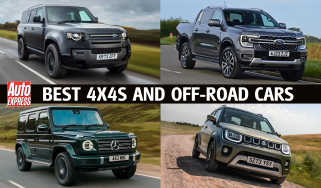

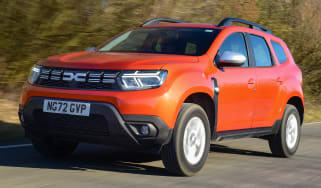




_yu73yx_o2dhpb.jpg)

